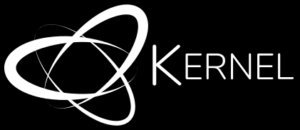These videos are part of Section 2 of the on-line course “Eagle Eye Astronomy”, initially released on France Université Numérique. These have recently been re-uploaded on youtube and close-captioned, to help better understand the audio track despite the French accent.
Monthly Archives: January 2017
Transit photométrique
IMPORTANT
Français: Pour que le programme javascript s’exécute correctement, il faut que ce post soit visualisé sans le reste du blog pré-chargé. Si les sliders de la simulation n’ont pas d’effet, rechargez le post en cliquant sur son titre ou en suivant ce permalien: merci!
English: For the javascript code to run, this blog post needs to be viewed by itself, ie. without the rest of the blog preloaded. If the sliders below seem to have no effect on the simulation, reload the post by clicking on its title or follow this permanent link: thanks!
Simulation du transit d’une exoplanète
Cette page propose une simulation numérique du phénomène de transit photométrique d’une planète extrasolaire. Les contrôles de l’expérience, permettent tour à tour de changer:
- Le diamètre apparent de la planète (en fraction de diamètre de l’étoile). Ex: une valeur de 0.5 veut dire que la planète a un diamètre apparent qui est la moitié de celui de l’étoile.
- L’inclinaison de l’orbite (en degrés), variant de 0 (système observé par la tranche) à 90 degrés (système vu par les pôles).
- Le niveau de bruit de la mesure photométrique, exprimé en pourcentage sur la valeur de référence (100%). Une valeur de 0 signifie que les mesures sont parfaites. Le bruit est simulé suivant une distribution gaussienne.
Le cadran de droite permet de visualiser le système: l’étoile, la planète et l’orbite de la planète (circulaire, en blanc) autour de l’étoile. La partie basse affiche la courbe de lumière du système pour les paramètres sélectionnés. Dans le cadran de droite, l’utilisateur peut, en cliquant sur la planète et en la promenant le long de son orbite, relier les différentes parties de la courbe de lumière à la position instantanée de la planète, grâce à la marque jaune superposée à la courbe. Il peut aussi utiliser le slider “position de la planète”.
ContrôlesMode haute sensibilité Position de la planète |
||
| Diamètre de la planète (x diamètre étoile) |
Inclinaison de l’orbite (degrés) |
Niveau de bruit (%) |
Coherence length
Coherence length and bandwitdh
A finite spectral bandwidth results in some spectral decorrelation of the electric field emanating from a source: even with a true point source, you will only observe the interference phenomenon (mutual coherence of the field) over a finite range of optical path difference (OPD) that is constrained by the coherence length.
Coherence length: Λ0 = λ²/Δλ
An purely monochromatic and phase-calibrated signal like the one coming out of a very good laser would exhibit an infinite coherence length, represented by the green curve plotted below.
Change the bandpass of the filter (here expressed as 1/R=Δλ/λ) to see its effect on the coherence length (the blue curve).
For a given bandpass (say 0.05 and 0.1), how many fringes can you make out in the fringe packet? How do the two quantities (bandpass, number of fringes) relate to each other?
Bandpass
This tool was developed as a part of the on-line course Eagle Eye Astronomy, hosted on the France Université Numérique website.
KERNEL pipeline on GitHub!
 One of the pillars on which the KERNEL project rests is a data processing pipeline that aims at being as versatile and portable as possible, for general astrophysics purposes as well as for metrology. The maintenance of this tool is one of the tasks listed among the work packages that make up the bulk of the KERNEL project. Since the idea is to make the pipeline available to the community at large, it was decided to host the source code on an open access repository on GitHub. The new package is called XARA, an acronym that stands for eXtreme Angular Resolution Astronomy, and can be downloaded right here. This package is an evolution of a previous incarnation called PYSCO (Python Self-Calibrating Observables), that was hosted on the now defunct Google Code platform. The most notable difference is that it is properly packaged and can be installed, so that its classes and functions can be called from anywhere in your python scripts.
One of the pillars on which the KERNEL project rests is a data processing pipeline that aims at being as versatile and portable as possible, for general astrophysics purposes as well as for metrology. The maintenance of this tool is one of the tasks listed among the work packages that make up the bulk of the KERNEL project. Since the idea is to make the pipeline available to the community at large, it was decided to host the source code on an open access repository on GitHub. The new package is called XARA, an acronym that stands for eXtreme Angular Resolution Astronomy, and can be downloaded right here. This package is an evolution of a previous incarnation called PYSCO (Python Self-Calibrating Observables), that was hosted on the now defunct Google Code platform. The most notable difference is that it is properly packaged and can be installed, so that its classes and functions can be called from anywhere in your python scripts.
It is accompanied by a convenient simulation package of eXtreme Adaptive Optics (XAO) astutely called XAOSIM and also made available on GitHub. Keep in mind that both are work in progress, that will be regularly updated over the course of the KERNEL project, as features are added and bugs are accounted for, so always check for the latest update of these tools before using them!
uv-coverage
Interferometric arrays and spatial frequencies
This post features a pretty fun simulation tool that will allow you to experience “by hand” the relation between the geometry of an interferometric array (that is the location of the telescopes or apertures making up the array) and the corresponding so called “uv-coverage”, that shows all the spatial frequencies the interferometric array gives access to.
The left-hand side plot shows the arangement of apertures. The user can select from several pre-set configurations (Y-shaped, hexagonal-grid, non-redundant) and modify them by moving, adding or removing individual apertures.
Moving one aperture by hand and observing what simultaneously happens on the right-hand side display is particularly “enlightening”: for one, you develop a more intuitive of the relation between one aperture and the different interferometric baselines it is involved with. In addition, you can also observe that geometries laying on a regular grid pattern sometimes result in overlapping points in the uv-plane. The only pattern that strictly avoids this situation is the non-redundant geometry.
|
|
|||||
|
|
Resulting uv-coverage |
This tool was developed as a part of the on-line course Eagle Eye Astronomy, hosted on the France Université Numérique website.
A logo for the KERNEL Project
Every good project needs a good logo. KERNEL now therefore has one: it was realized by my brother, Wilfried Martinache, who’s training to become a professional graphic designer. Check out his website: thebigbluebear.net. I think the logo is pretty neat, as it suggests that the stuff that really matters, at the heart of things (ie. the kernel!), may be invisible although it influences everything around it!



